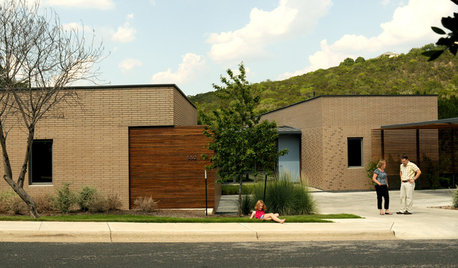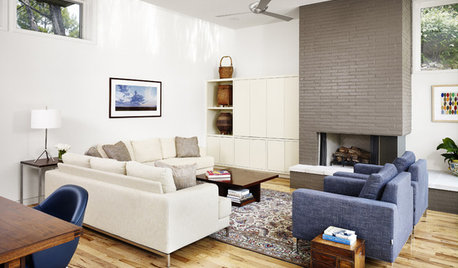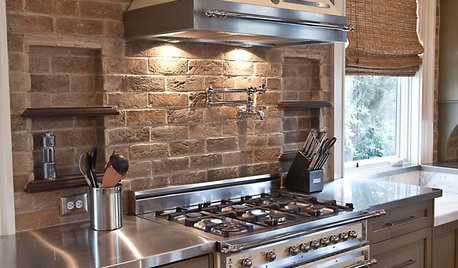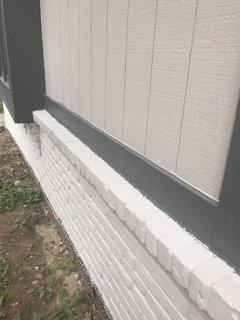Exterior brick: Flat or Satin?? Help.
L C
7 years ago
Featured Answer
Sort by:Oldest
Comments (53)
Christopher Nelson Wallcovering and Painting
7 years agoL C thanked Christopher Nelson Wallcovering and PaintingL C
7 years agoRelated Discussions
Exterior Paint Advice - Flat or Satin
Comments (81)Good luck getting SW paint at the moment. They had one of their main plants in Texas go down during the February deep freeze and it apparently is still not up and running. They also got themselves into a disadvantageous contract to supply Lowes, which is biting them in the butt. So what did SW do? They raised their over priced paint once again! The whole paint industry is really disrupted at the moment. Fortunately, Behr is in relatively good shape as to production. They even came out with their new super premium Dynasty line this week. Super paint in the MId $50 range. Both SW and PPG have been in buy out the competition programs for the last couple decades. In retrospect, maybe they should have been paying better attention and investing in their own core operations....See MoreSatin finish for exterior paint?
Comments (10)Thank you to everyone for the replies. This is very helpful and I really appreciate the comments. My impression is that many people still go with flat on the wall and semi-gloss on the trim. My neighbor just had his house done by a reputable contractor and he (the painter) said this is standard. But I agree with all of the points mentioned here about the superiority of satin and will go with it. I actually did paint a small section with satin and it looked a bit shiny, but this was in comparison to the dingy flat and I agree about the shine wearing off a little over time. Thanks also for the reminder about proper prepwork and choosing the right paint. What I've been reading is that stucco does better with elastomeric paint because of expansion and contraction. There's a Benjamin Moore store fairly close and I'll head over there tomorrow. Much appreciated, all!...See MoreExterior Paint Advice - Matte or Satin???
Comments (1)I prefer satin for exterior. Dirt and grime can be washed off easier. Satin is not very glossy. Flat ends up being a dirt magnet. I did a lot of historic colonials in semi gloss. But I think that is probably not popular these days. As for the deck, I'm not good at choosing colors for people on the Internet. You can try the Home Decorating forum. They will probably ask to see photos. Good luck!...See MoreExterior help - paint full house, limewash brick, just paint siding?
Comments (10)@Zone4 yeah, I think I'm starting to realize that the brick probably helps break up the facade and keep it interesting. I'm starting to be really intrigued with the limewashing idea. If it turns out we could paint the windows, would you do black or white? I like the idea of a black/charcoal, but have also heard that is the worst color on vinyl windows. @aprilneverends it has been hard to really get the colors across from the listing pics. Basically it is 50 shades of unappealing (to me at least) tan inside and out. So I want a dramatic change, but I know people are really torn about changing brick, so I'll probably have my husband mockup a version with the brick and a dark greige paint to see how that looks alongside a limewashed version. Front door, yes, that thing has a big stain glass Texas star that doesn't help anything. I was thinking one of the modern doors with 3-5 satin horizontal lites to keep some light coming in from the door, then finding a complimentary garage door. For the French doors, I definitely won't change my mind on the divided lites - however they are just an overlay on top of a solid piece of glass, so one of the contractors said you could just pop them off. One set of doors needs a new handle, the other needs about $300 in repair work and weatherproofing, so that is why I'm debating whether or not to rehab these versus put in new ones. And if we replace, I don't know if sliding glass doors that let in tons of light or new French doors with the thinnest frame possible would look best. I know landscaping will have a huge impact too, and could really turn this into a more modern looking house. The bones are certainly good, and it is plain enough that we can subtly take it in a couple directions, just trying to narrow down what will look best while also being somewhat our style....See Morefall50
6 years agoL C
6 years agoimbikegirl
6 years agoL C
6 years agoKay
6 years agoL C
6 years agoKay
6 years agoDebbie Downer
6 years agoKay
6 years agoDebbie Downer
6 years agobossyvossy
6 years agoPaint sales at Home Depot
6 years agoDebbie Downer
6 years agoPaint sales at Home Depot
6 years agoMichael
6 years agolast modified: 6 years agoMichael
6 years agolast modified: 6 years agobossyvossy
6 years agoMichael
6 years agolast modified: 6 years agobossyvossy
6 years agolast modified: 6 years agoPaint sales at Home Depot
6 years agoMichael
6 years agoMichael
6 years agoPaint sales at Home Depot
6 years agolast modified: 6 years agoMichael
6 years agoMichael
6 years agoPaint sales at Home Depot
6 years agoPaint sales at Home Depot
6 years agoMichael
6 years agoMichael
6 years agoPaint sales at Home Depot
6 years agolast modified: 6 years agosince400bc
6 years agoBadeeza Dee
6 years agoL C
6 years agoBadeeza Dee
6 years agoBadeeza Dee
6 years agoL C
6 years agoLisa Hearne
6 years agoLisa Hearne
6 years agoPaint sales at Home Depot
6 years agolast modified: 6 years agoAnn Westfall
5 years agoAnn Westfall
5 years agoDebbie Downer
5 years agoBadeeza Dee
5 years agoShiloh S
last yearXYZ Construction & Renovation Group
last year
Related Stories

EXTERIORSHelp! What Color Should I Paint My House Exterior?
Real homeowners get real help in choosing paint palettes. Bonus: 3 tips for everyone on picking exterior colors
Full Story
COLORPick-a-Paint Help: How to Quit Procrastinating on Color Choice
If you're up to your ears in paint chips but no further to pinning down a hue, our new 3-part series is for you
Full Story
COLORPaint-Picking Help and Secrets From a Color Expert
Advice for wall and trim colors, what to always do before committing and the one paint feature you should completely ignore
Full Story
STANDARD MEASUREMENTSThe Right Dimensions for Your Porch
Depth, width, proportion and detailing all contribute to the comfort and functionality of this transitional space
Full Story
ARCHITECTUREHouse-Hunting Help: If You Could Pick Your Home Style ...
Love an open layout? Steer clear of Victorians. Hate stairs? Sidle up to a ranch. Whatever home you're looking for, this guide can help
Full Story
SELLING YOUR HOUSE10 Low-Cost Tweaks to Help Your Home Sell
Put these inexpensive but invaluable fixes on your to-do list before you put your home on the market
Full Story
REMODELING GUIDESWisdom to Help Your Relationship Survive a Remodel
Spend less time patching up partnerships and more time spackling and sanding with this insight from a Houzz remodeling survey
Full Story
REMODELING GUIDESBrick: A Heavyweight for Modern Exteriors
If you picture only traditional homes when you think of brick, it's time to reconsider this modern contender
Full Story
DECORATING GUIDESWhat You Need to Know Before Painting Brick
Sure, painted brick can be a great look. But you need to take some risks into account. Here's how to paint brick like a pro
Full Story
KITCHEN DESIGNYes, You Can Use Brick in the Kitchen
Quell your fears of cooking splashes, cleaning nightmares and dust with these tips from the pros
Full Story






Paint sales at Home Depot